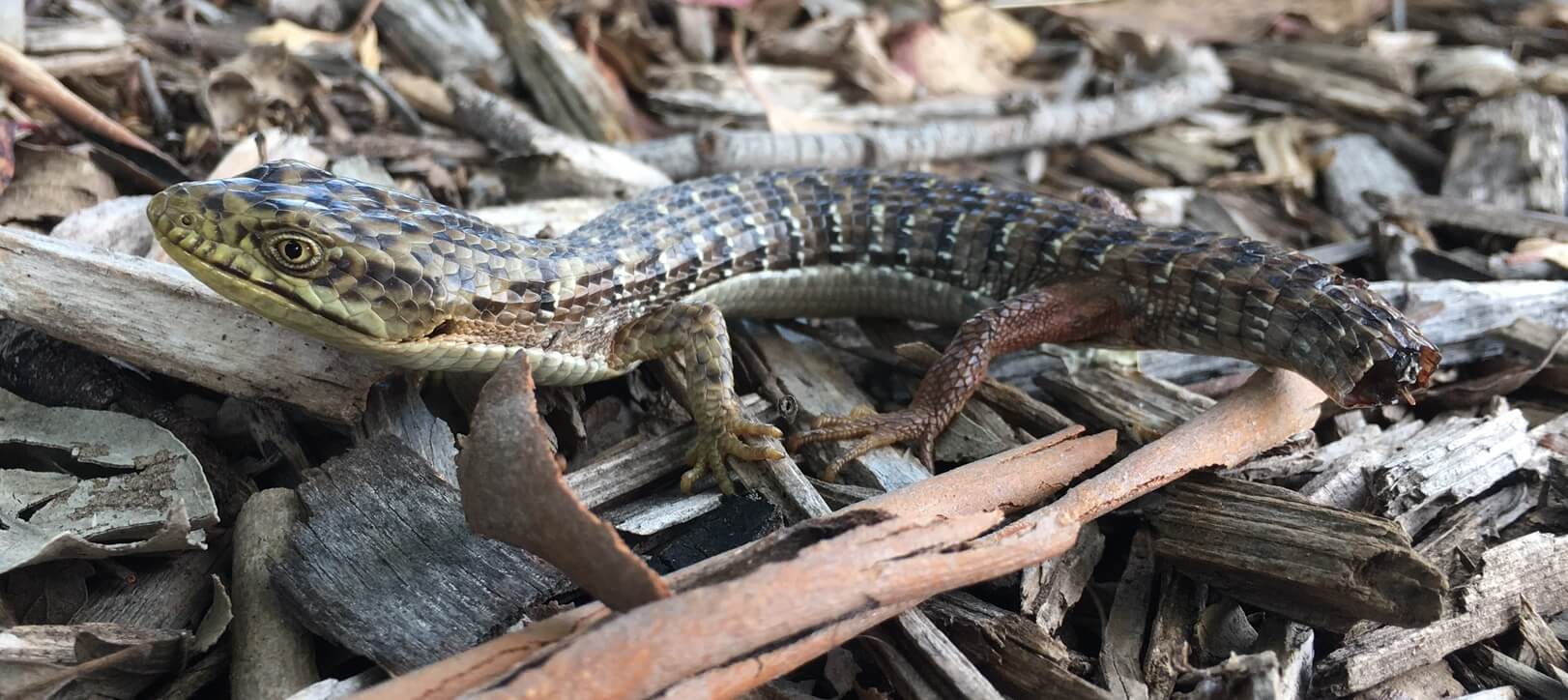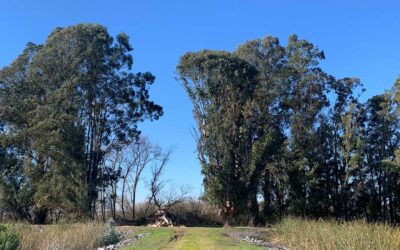Photos from Urszula Dziri. Text by Pam Williams, John Shribbs, and Dave Barry.
Urszula recently spotted a California alligator lizard at Ellis Creek. It was missing its tail, which is common. Pam and John did some research to identify it. Dave Barry stepped up with a comment that is now included below. We are building a database of information about each species seen in our wetlands and much of the information is in our photo galleries as captions to the pictures.
From John Shribbs: Brown to tan to yellowish colored body with black, white, and red banding. Main body , up to 7 inches and total length up to 12 inches long if the tail has never been broken off and regenerated. Eyes are light yellow. Alligator lizards are generally secretive, tending to hide in brush or under rocks, and are common in yards and garages. Moves with a snake-like undulating motion, often tucking the rear legs up against the side of the body and pulling itself along on its belly with the front feet and a good swimmer. Alligator lizards do not typically bask in the sun out in the open or on top of a rock like many other lizard species. They seem to prefer sunny spots with some cover nearby.
From Pam Williams: It is an alligator lizard, Elgaria sp., either southern (Elgaria multicarinata) or northern (E. coerulea). Both occur in Sonoma County and are best told apart by picking them up and looking at the coloring on the ventral scales. Both have pale bellies, described as pale gray to pale yellow for the southern alligator lizard, and as whitish, cream or light gray for the northern alligator lizard. The most obvious difference on the venter is darker gray longitudinal lines down the middle of the scale rows in the southern alligator lizard, while the northern alligator lizard shows longitudinal stripes between the ventral scale rows. There are reproductive differences between the species as well, since the southern one lays eggs in animal burrows, while the northern lizard is ovoviviparous, meaning the female retains the yolked eggs without shells inside her body and lays them only after incubation enclosed only in a white membrane. This difference allows the northern lizard, which lives in cooler habitats, to control embryo temperature by basking in the sun to warm up the embryos.
From Dave Barry: Another great ID feature of our SF Bay Alligator Lizards is the eye color. Your is light eyed or yellowish. Which would make this a Southern Alligator Lizard, Elgaria multicarinata. Northern Alligator Lizards Elagria coerulea have very dark eyes.





Hi,
Another great ID feature of our SF Bay Alligator Lizards is the eye color.
Your is light eyed or yellowish. Which would make this a Southern Alligator Lizard, Elgaria multicarinata.
Northern Alligator Lizards Elagria coerulea have very dark eyes.
Nice photo and article, thanks for sharing.
I work at a winery napa. A customer showed me a photo of a five foot lizards in the water. Johnsons beach guernville.. lizard?